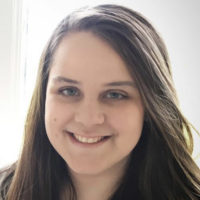Webinars of the Origins Center, the Netherlands: “Life but not alive”
Life but not alive.

Maddie Westenberg is an Undergraduate Researcher pursuing a degree in biochemistry. She is working on a computational project to model the PURE system in synthetic cells. Her interests include synthetic biology, astrobiology, reading, hiking, and playing the clarinet.

Elisabeth Edgerton graduated from UW-Madison in 2012 with a B.S. in Animal Science. She has previously worked for UMN Research Animal Resources and the UMN Veterinary Diagnostic Lab on the St. Paul campus. She is currently working on a computational project modeling the PURE system in synthetic cells.
In her free time, Elisabeth enjoys traveling, computer games, starting various crafting projects, and spending time with her guinea pigs, Piglet and Pooh.
Contact: edge0033@umn.edu

Contact: robi1368@umn.edu
Abbey graduated from the University of Missouri in 2018 with her B.S. in Biological Sciences. During her undergraduate years, she worked as a researcher in Dr. Troy Zars’ lab studying thermogenetic tools in Drosophila.
In 2019, Abbey joined the Adamala lab as a graduate student in MCDB&G. Her interests include tool development, astrobiology, and environmental biotechnology. In her free time she enjoys cooking, traveling, and hanging out with her dog, Blue.

Evan is a graduate student evolving the ribosome and tRNAs to enable robust translation of noncanonical amino acids.
Contact: kalb0034@umn.edu
|
|
Spatial multiplexing of fluorescent reporters for dynamic imaging of signal transduction networks |
Kate was a guest of Space Explr podcast, discussing Science And Engineering of Building Synthetic Cells https://www.youtube.com/watch?v=4fznl9wLtmw
Kate participated in Santa Fe Institute podcasts on the Andromeda Strain and Meaning of Life.
with Sara Walker:
https://www.youtube.com/watch?v=TH7O5IQpC1A
with Chris Kempes
https://www.youtube.com/watch?v=79qzllZrroc
Kate Adamala and Trinity Hamilton from the College of Biological Sciences at the University of Minnesota discuss how tiny life forms on the fringes may illuminate huge truths about life in the universe. What do microbes that live on glaciers and in snow on Earth tell us about the potential for life on Mars? What can a cell made from scratch in a lab reveal about how life may have originated here on Earth—and beyond? This research on extremophiles and synthetic cells provides a unique take on life that may shed important insights into space travel and extraterrestrial life.
Probable Meets Possible: When Life Gets Weird.